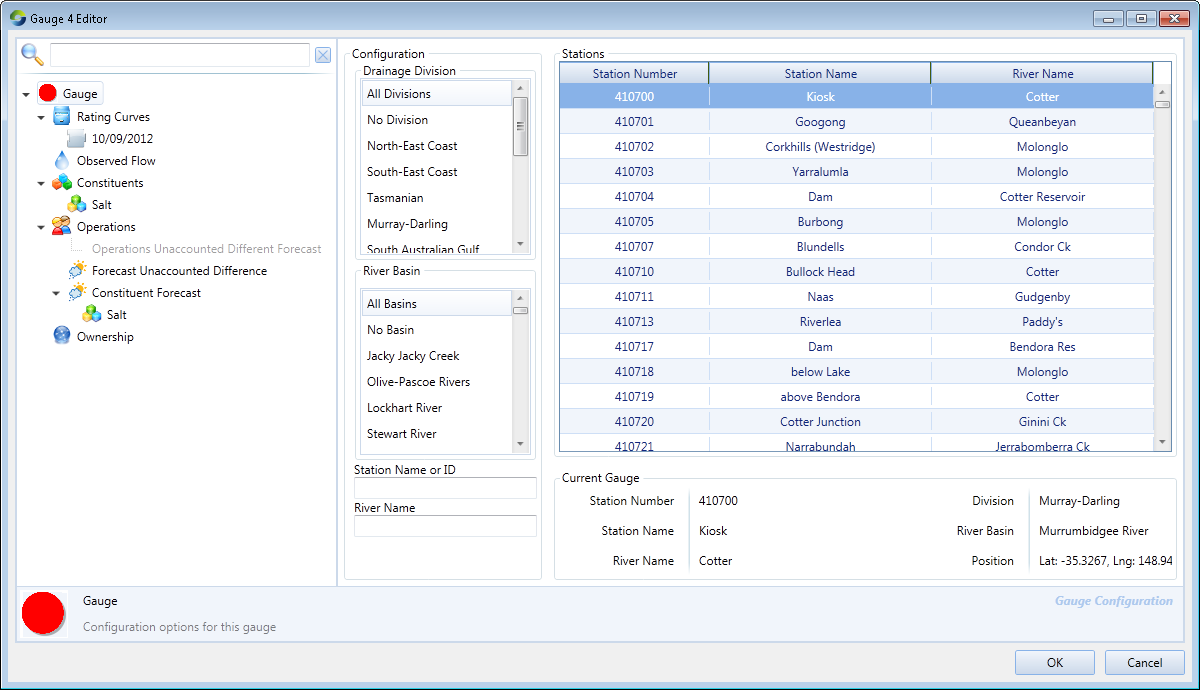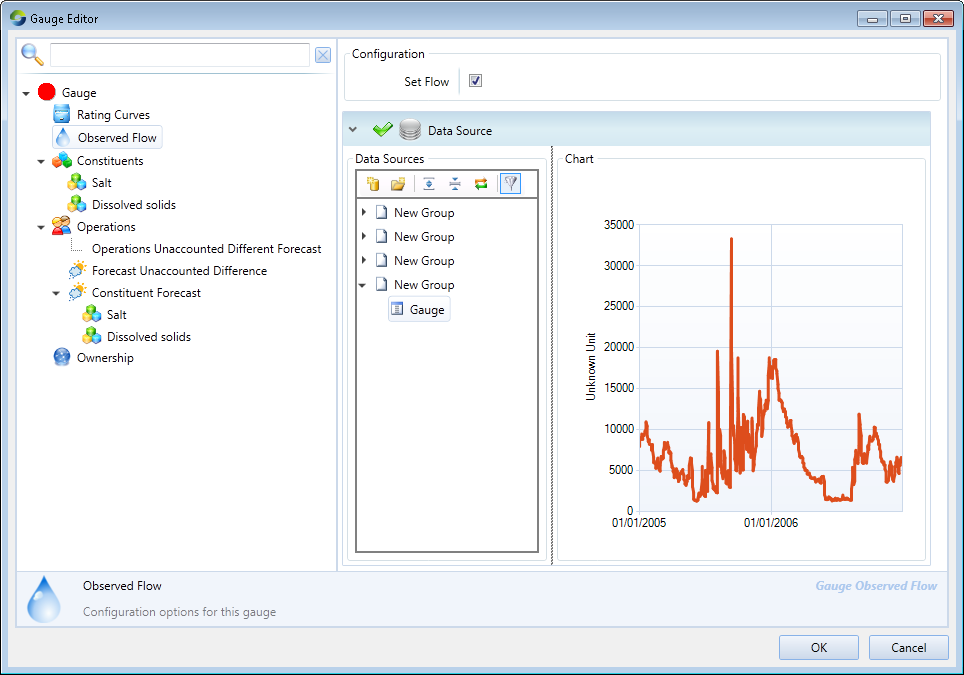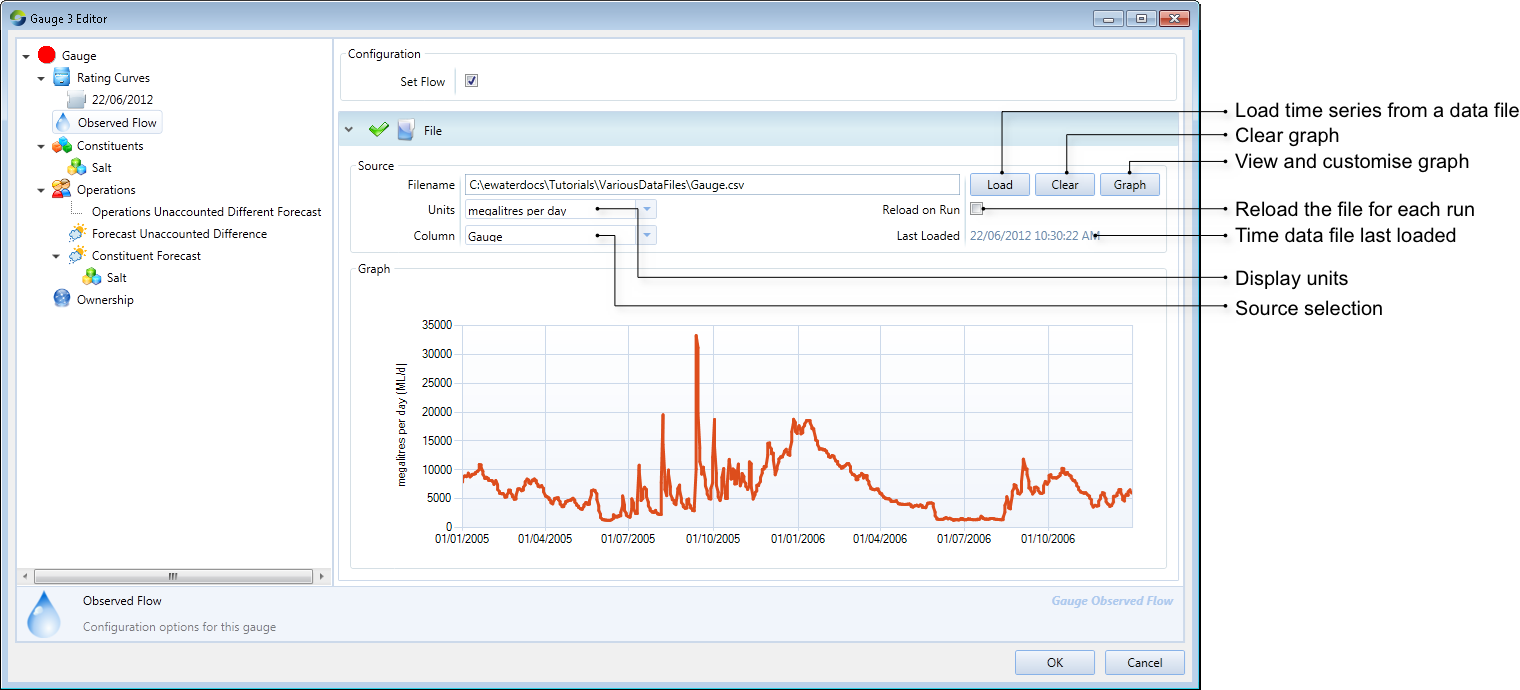A Gauge node either represents a physical recording device that measures river levels at a point in a river or a logical point in a river model where you need to be able to record and view the modelled flow. Gauge nodes are used in conjunction with rating curves to estimate flows for a particular location. You can use a gauge node for model calibration and verification, by comparing observed and predicted flow.

The Bureau of Meteorology (BOM) station identifier can be set from the station list visible in Figure 1. Find and select the station name in the list and click OK.
If you have a time series for the physical gauge location, you can load it by clicking the file in Data Sources. This populates the chart on the right hand side with the time series. Table 2 shows the file format. However, the data is only for your own reference. It plays no part in the model run.
| Row | Column (comma-separated) |
|---|
| 1 | 2 |
| 1 | date | value |
Enabling the Set Flow checkbox results in the modelled flow at a gauge being overridden by the gauge flow. This forces the modelled flow to equal observed flow and converts a gauge node to an Unaccounted Difference node (Figure 2). This is used in operations environments to check for differences in water balances on links. Refer to Forecasting for details.
Figure 2. Gauge node, Observed flow

A rating curve converts a flow into a level, producing an output of level (Figure 3). You would often have recorded gauge level at a gauge rather than flow, thus making it useful for calibration.

Ownership – Refer to Ownership for more information.
Operations – this is similar to the recession forecast model in the inflow node. Refer to Forecasting inflows.
Constituents – This behaves in a similar manner as Gauge flow. Refer to Gauge node. Ensure that constituents have been defined prior to configuring them (using Edit » Constituents).



